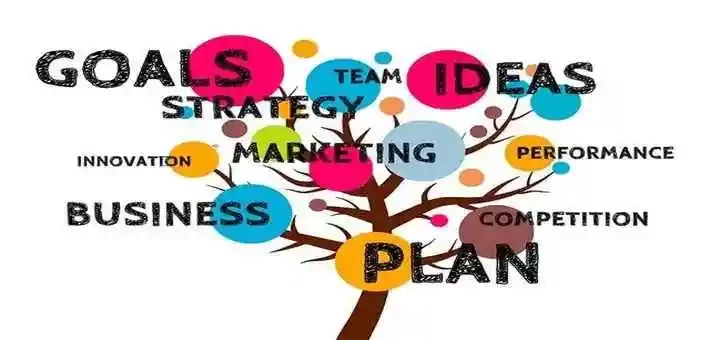Introduction to Management MCQs
Management is the process of dealing with or controlling resources and people to achieve a specific purpose. Management is a five-step process and comprises of planning, organizing, directing, coordinating, and controlling the work of a group of employees. Here on MCQs.club we have prepared useful Multiple-Choice Questions (MCQs) on Introduction to Management covering the lecture notes, intro to management, the theory, principles and course outline of management. These introduction to mgt MCQs are useful for Professional accountancy exams, Competitive exams and Business management exams.
- Management is the process of dealing with or controlling resources and people to achieve a specific purpose.
- True
- False
- Management is a five-step process and comprises of planning, organizing, directing, coordinating, and controlling the work of a group of employees.
- True
- False
- Management skills include:
- leadership, time and stress management
- innovation and creativity, communication
- information gathering, negotiation, coaching and gathering
- All of the above
- Classical Theory of Management include –
- Scientific Management of Taylor
- Administrative Management of Fayol
- Bureaucratic Model of Max Weber
- Rosemary Stewart
- All of the above
- Neo-classical Theory or Behavior Approach of Management include –
- Hawthorne experiment
- George Elton Mayo
- Both A&B
- None
- Management Levels include:
- Top managers
- Middle managers
- First line managers
- All of the above
- Top Managers –
- Provide the overall direction of an organization
- It includes Chief Executive Officer, President, Vice President
- Both A&B
- None
- Middle Managers –
- Coordinate employee activities
- Determine which goods or services to provide
- Decide how to market goods or services to customers
- It includes Assistant Manager, Manager
- All of the above
- First-line Managers –
- Have direct responsibility for producing goods or services
- It includes Foreman, supervisors, clerical supervisors
- Both A&B
- None
- Operations Research (OR) –
- Is also referred to as operational research
- Is a type of decision-making and problem-solving methodology that uses analytical techniques
- It helps to ultimately make better decisions
- All of the above
- Operations research techniques include:
- Network analysis, Simulation
- Game theory, Mathematical logic
- Queuing theory, Mathematical optimization
- All of the above
- A number of different game theory styles exist including:
- Zero-sum games – this is where one person’s gain is another’s loss
- Many-person (or non-zero-sum) games – these are used to study economic behavior where the objective is that for the greater good it pays for parties to cooperate
- Both A&B
- None
- Queuing theory – This describes using mathematical methods for analyzing and predicting the delays and congestion of waiting and queuing. The objective is to identify ways to improve the process to make it quicker.
- True
- False
- In practice, operations research is used by management to:
- maximize something (e.g. profit, yield, utilization or performance)
- minimize something (e.g. loss, cost or risk)
- Either of the above
- None
- The key skills which management need in order to operate as effective managers include:
- Leadership, Time management, Stress management
- Innovation and creativity, Communication
- Information gathering, Negotiation, Coaching and mentoring
- All of the above
- Leadership is termed as the process to influence the individuals to attain a common goal. Effective leadership within an organization involves:
- guiding and directing others to achieve the goals of the organization
- making the best use of the knowledge, skills and talent of others in the organization
- developing the knowledge, skills and talent of others in the organization.
- All of the above
- Effective leadership therefore increases the effectiveness of the organization, by getting the best out of employees to achieve the aims and objectives of the organization.
- True
- False
- Barriers to effective time management include:
- Procrastination (thinking about things too long without making a decision)
- Ineffective delegation
- Mismanaging paperwork and official documentation
- All of the above
- Effective time management techniques include:
- Identify objectives, label tasks then prioritize
- Monitor the plan and take remedial action when slippage is identified
- Set daily, medium-term and long-term plans
- Make appointments with oneself – time for thinking and reviewing
- All of the above
- Innovation and creativity manifests in a number of ways, examples include:
- To identify solutions quickly and flexibly during a negotiation
- Delegating design and innovation to a specialist
- Both A&B
- None
- The purpose of communication is to:
- support management, generate ideas
- co-ordinate plans, gather and provide information
- communicate goals, plans and structures
- All of the above
- Managers need to be able to communicate in all directions including:
- horizontally (with peers i.e. other similar grade managers)
- vertically (upwards to report to more senior managers, and downwards to instruct or brief subordinates)
- diagonally (outside their reporting line e.g. to get help from other teams with innovation and problem solving)
- All of the above
- Managers need information in order to perform their roles. Information arises from a number of sources including:
- Listening
- Observation
- Interviews
- All of the above
- Coaching – short term practice aimed at improving a specific skill or knowledge. The process includes:
- Establish learning targets
- Plan and execute a systematic learning and development program involving self-study, formal training courses and on-the-job training
- Both A&B
- None
- Mentoring –
- Involves establishing a long-term relationship with a ‘trusted advisor’ who is normally not part of someone’s reporting line.
- A mentor is often described in many ways such as old wise man, teacher, counsellor, role model, supporter and encourager
- Both A&B
- None
- The techniques adopted by a manager in making the mentoring role effective include:
- Actively managing the relationship
- Encouraging and nurturing the mentee
- Interacting with mutual respect
- Responding to the mentee’s needs
- All of the above
- Leadership and management are related but they are not the same. Identify which of the following is correct?
- The manager focuses on systems and structure; the leader focuses on people.
- The manager has his eye on the bottom line; the leader has his eye on the horizon.
- Both A&B
- None
- Managers often are more concerned with maintaining the status quo and taking few risks because they have short-term goals and have to deliver quick results.
- True
- False
- Evolution of management may be divided into:
- Pre-scientific management period
- Classical Theory
- Neo-classical Theory or Behavior Approach
- Contemporary Management
- All of the above
- The major theories that comprise the classical approach are:
- Scientific management
- General administrative theory
- Both A&B
- None
- Taylor’s Principles of Scientific Management include:
- There should be an equal division of work between the workers and management, and workers and managers should operate closely together.
- Workers should be selected carefully. They should have the skills and abilities that are well-suited to the work. They should also be trained in how to do the work efficiently.
- Both A&B
- None
- Fayol’s Principles of Administrative Management include:
- Division of Work, Unity of command, Unity of direction
- Subordination of individual interests to the general interest
- Stability of tenure of personnel and Scalar chain
- All of the above
- Lyndall Urwick’s Principles of organizations include:
- Every organization and every part of the organization must be an expression of the purpose of the undertaking concerned, otherwise it is meaningless and therefore redundant.
- The purpose of organizing per se, as distinguished from the purpose of the undertaking, is to facilitate co-ordination and thus unity of effort.
- The responsibility of the superior for the acts of the subordinate is absolute.
- All of the above
- Weber’s ‘ideal’ bureaucracy characteristics include:
- There should be written rules of conduct.
- There should be promotion of individuals within the organization, based on their achievement.
- There should be division of labor and specialization of work.
- The ideal bureaucracy will achieve efficiency in operations.
- All of the above
- Features of bureaucracy according to Rosemary Stewart include:
- Specialization
- Hierarchy of authority and A system of rules
- Both A&B
- None
- Theory X style of management assumes that:
- The average person dislikes work and will avoid having to do any if at all possible.
- Individuals must therefore be forced to work towards the organization’s objectives, with the threat of punishment for not working properly.
- The average person prefers to be directed, wants to avoid responsibility, has no ambition and wants security more than anything else.
- All of the above
- Theory Y organizations give employees frequent opportunities for promotion and personal growth. This style of management assumes that:
- Putting effort into work is as natural as play.
- Individuals usually accept and then seek responsibility.
- At work, the intellectual potential of the average person is only partly utilized. Individuals have much more potential that could be utilized.
- All of the above
- Theory Y approach is not always possible, or advisable because:
- Theory Y is difficult to put into practice in a factory environment.
- There will be some situations when the manager must exercise his authority, because this is the only way of getting results.
- Both A&B
- None
- The main features of Theory Z are:
- Collective decision-making.
- Long-term employment and job security.
- Emphasis on training and continual improvement of product and performance.
- Individual responsibility for shared accomplishments.
- All of the above
- According to Peter Drucker the areas or categories of management responsibility include:
- Setting objectives, Organizing work
- Motivating and communicating
- Measuring and Developing people
- All of the above
- The aspects to the responsibilities of managers in business according to Peter Drucker include:
- Managing the business
- Managing managers
- Managing workers and their work
- All of the above
- According to Rosabeth Moss Kanter the re-birth and success of business organizations will depend on:
- innovation (developing new products, services and operating methods)
- entrepreneurship (taking business risks)
- participative management
- All of the above
- Managers spend much of their time performing interpersonal roles such as:
- They perform a vital role as figurehead of organization while dealing with external stakeholders of the organization.
- They perform as leaders while dealing with internal stakeholders of the organization.
- Both A&B
- None
- Identify Managers perform which of the following informational role?
- They develop an extensive knowledge of the organization by monitoring the information they receive/monitor from formal and informal sources.
- They disseminate information by acting as a channel of information within the group and with others.
- They act as a spokesperson for the group in a ‘public relations’ capacity.
- All of the above
- The factors a theorist may consider in choosing a management approach are:
- Size of the organization
- People and workforce
- The relevant technological issues
- The operating environment and industry
- All of the above
—More to come soon—
Read more
Read more
Read more
Read more
Read more
Read more





5 Responses
thanks for your helping
aim highly appreciation for your helping after than i would like to sent the answers and true and false qeustions
Stay tune for more.
Thank you alot ?
Thats very neccesary continous morethan that
More coming soon. Stay tuned